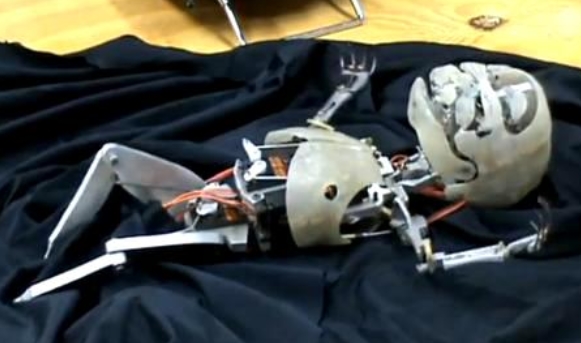One of the trademarks that distinguishes robots from humans is the ability to reproduce. This dividing between man and machine just got blurrier. Researchers in Amsterdam have created robots that can mate and spawn offspring through a process similar to human reproduction.
Robots have created quite a stir in the media recently, as more and more machines take on human tasks. Some estimates suggest automation could take over half of the work force.
That’s just the beginning. In addition to replacing jobs, robots could be replacing themselves. Although the idea of robots reproducing through sexual reproduction may sound like science fiction, the concept was proven in February when two robots mated and gave birth to the very first ‘robot baby.’
The Industrial Evolution
After being born, the baby robot is then sent to a clinic and a nursery where it is raised and receives an education. Every robot must participate in the learning process. If the robot is regarded as efficient, then it will grow into an adult robot and possibly a parent robot. The researchers dubbed this new robot era as the Industrial Evolution.
But how did the robots do ‘it’ with a capital I? Each robot had its genome programmed to determine both their software and hardware. They can interact using wi-fi, mix their genomes and send it to a 3D printer. As a result, a new robot is created in a way that mirrors the evolutionary process.
“We have two robots that meet and mate, and just as in the animal kingdom, this results in a baby,” noted Guszti Eiben, Professor of Artificial Intelligence at VU, in a video explaining the idea. “The robots live, work, and reproduce in an ‘Arena,’ where they are able to select a suitable mating partner,” he added.
As the evolutionary process continues to unfold, the researchers claim the robots will be able to fulfill various niches in mysterious environments that are too dangerous for human exploration, including deep sea mines and other worlds.
“The Evolution of Things is an emerging new technology that exploits the power of selection and reproduction to breed robot designs that are hard to obtain by traditional approaches,” said Eiben. Robots that evolve can adapt to their environment and cope with unforeseen situations.
“The bodies, brains, and behaviors are continually tested by the environment and the useful traits are amplified in future generations. This technology opens new perspectives for robotics, artificial intelligence, space research, and even biology.”
The team debuted the first robot baby on May 26 at Campus Party in the Jaarbeurs in Utrecht, illustrating how the robots reproduce. The researchers believe robots that reproduce on their own could own day help colonize other planets.
“What does it all mean? It means a proof of concept,” Eiben says in the video. “And the concept we prove is the evolution of robots and physical hardware. For science this means that artificial evolution can break out of computer simulations and enter the real world.”
A double edge sword
Just as there are benefits to self-reproducing robots, like any piece of technology, there are also risks. Technologies that were produced with best intentions in mind have been used for some of the most malicious deeds.
At present, these robots do not pose a threat. However, if they are integrated into other technological novelties, they could become a risk. Advances in artificial intelligence are enabling machines to think like humans do and robots that can gobble up matter in the environment as a fuel source already exist. Taken together, these developments have formed the foundation of machines acting like living organisms.
Wherever that foundation may takes us is anyone’s guess. What is known is that reproduction is no longer an act reversely solely for living flesh.
A video of the robot can be viewed below.
Sources include


